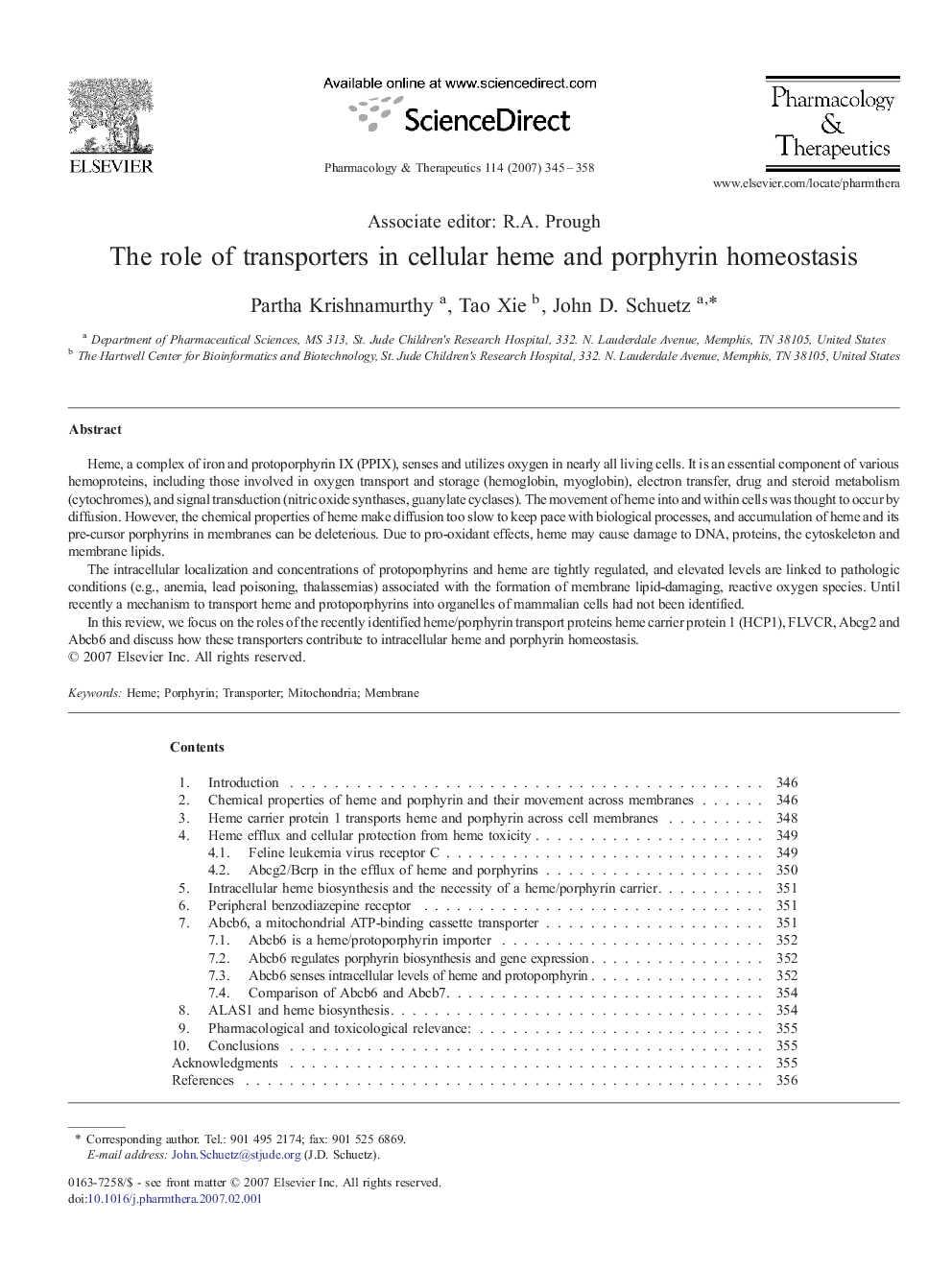| Article ID | Journal | Published Year | Pages | File Type |
|---|---|---|---|---|
| 2563702 | Pharmacology & Therapeutics | 2007 | 14 Pages |
Heme, a complex of iron and protoporphyrin IX (PPIX), senses and utilizes oxygen in nearly all living cells. It is an essential component of various hemoproteins, including those involved in oxygen transport and storage (hemoglobin, myoglobin), electron transfer, drug and steroid metabolism (cytochromes), and signal transduction (nitric oxide synthases, guanylate cyclases). The movement of heme into and within cells was thought to occur by diffusion. However, the chemical properties of heme make diffusion too slow to keep pace with biological processes, and accumulation of heme and its pre-cursor porphyrins in membranes can be deleterious. Due to pro-oxidant effects, heme may cause damage to DNA, proteins, the cytoskeleton and membrane lipids.The intracellular localization and concentrations of protoporphyrins and heme are tightly regulated, and elevated levels are linked to pathologic conditions (e.g., anemia, lead poisoning, thalassemias) associated with the formation of membrane lipid-damaging, reactive oxygen species. Until recently a mechanism to transport heme and protoporphyrins into organelles of mammalian cells had not been identified.In this review, we focus on the roles of the recently identified heme/porphyrin transport proteins heme carrier protein 1 (HCP1), FLVCR, Abcg2 and Abcb6 and discuss how these transporters contribute to intracellular heme and porphyrin homeostasis.
